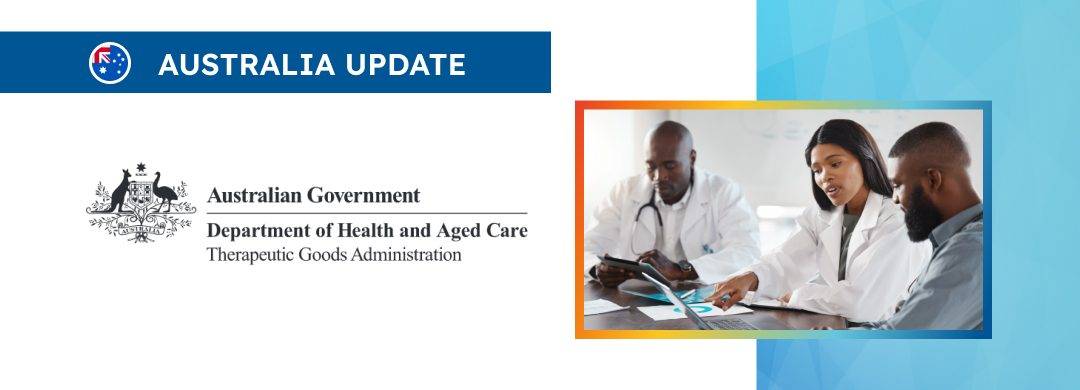The article highlights the critical points related to the regulatory requirements for quality management system audits and certification.

Table of content
The Therapeutic Goods Administration (TGA), an Australian regulating authority in the sphere of healthcare products, has published a guidance document dedicated to the Quality Management System (QMS) audits and certification in the context of medical devices.
The document provides an overview of the applicable regulatory requirements, as well as additional clarifications and recommendations to be considered by medical device manufacturers and other parties involved to ensure compliance with them.
The authority also reserves the right to make changes to the guidance, should such changes be reasonably necessary to reflect corresponding amendments to the underlying legislation.
The purpose of the guidance is to inform medical device manufacturers about the quality management system audits process, roles and responsibilities during these audits, aspects of TGA conformity assessment (CA) certification, and post-audit activities.
The document explains the circumstances under which a QMS audit is conducted. These include receiving a TGA conformity assessment QMS certification application, identification of non-compliance signals, safety or quality issues in manufactured devices, reports or complaints of potential non-compliance, and safety concerns following post-market reviews.
Types of Audits
The document further details three types of audits: onsite, remote, and desktop QMS audits.
Onsite audits involve physical inspection of facilities and observation of non-verbal communication.
Remote audits, conducted over the internet, include interviews, activity observation, and documentation review and are usually done when travel restrictions apply.
Desktop audits review documents submitted by manufacturers and may lead to on-site audits based on the assessment of these documents.The second part of the guidance document issued by the TGA offers an exhaustive overview of the regulatory environment for combination products in Australia.

Audit Process
The audit process is divided into five stages: announcing, preparing, conducting, reporting, and closing the audit.
Each stage involves steps and procedures to ensure thorough evaluation and compliance checking.
Most audits are announced in advance, although unannounced audits are also possible.
The announcement includes setting up dates and sending a formal letter requesting specific documents from the manufacturer.
Preparation involves drafting an audit plan and attendance sheet, requesting and reviewing documents, and reviewing publicly available material on the company and products.
Technical standards and compliance evidence are also reviewed during this phase.
The audit team comprises a lead auditor, technical specialists, trainee auditors, and observers. The team’s composition is communicated to the manufacturer before the audit.
The opening meeting, chaired by the lead auditor, sets the scope and objectives of the audit, confirms the audit plan, and outlines the audit conduct.
It also discusses dispute and complaint-handling processes.
The audit involves collecting evidence on compliance with relevant requirements. This includes interviewing personnel, observing manufacturing processes, and reviewing procedures, records, and compliance with technical standards.
According to the guidance, the audit approach focuses on compliance, encouraging open communication, and viewing audits as opportunities for quality management system improvement.
Audit Conclusion, Closing Meeting, and Report
As further explained by the TGA, the conclusion involves generating audit findings and holding a closing meeting to present these findings.
The closing meeting discusses audit findings, including compliance or non-compliance, and offers an opportunity for the manufacturer to raise concerns. Dispute resolution attempts are made if there are disagreements over the findings.
A report summarizing the audit findings, including any identified nonconformities, is prepared and sent to the manufacturer within 60 days of the audit’s conclusion.
Nonconformities are classified as major or minor, with major ones indicating significant deviations or failures in fulfilling QA/QC responsibilities and minor ones showing departures from standards or requirements.
Conclusion
In summary, the present TGA guidance provides a detailed overview of the existing regulatory framework for different types of audits the entities involved in operations with medical devices could be subject to, highlighting the critical points associated with how they should be planned and conducted.
The document explains the roles of the parties involved. It outlines the primary considerations to be taken into account in order to ensure compliance with the requirements set forth by the respective regulations.
How Can RegDesk Help?
RegDesk is a holistic Regulatory Information Management System that provides medical device and pharma companies with regulatory intelligence for over 120 markets worldwide. It can help you prepare and publish global applications, manage standards, run change assessments, and obtain real-time alerts on regulatory changes through a centralized platform. Our clients also have access to our network of over 4000 compliance experts worldwide to obtain verification on critical questions. Global expansion has never been this simple.

